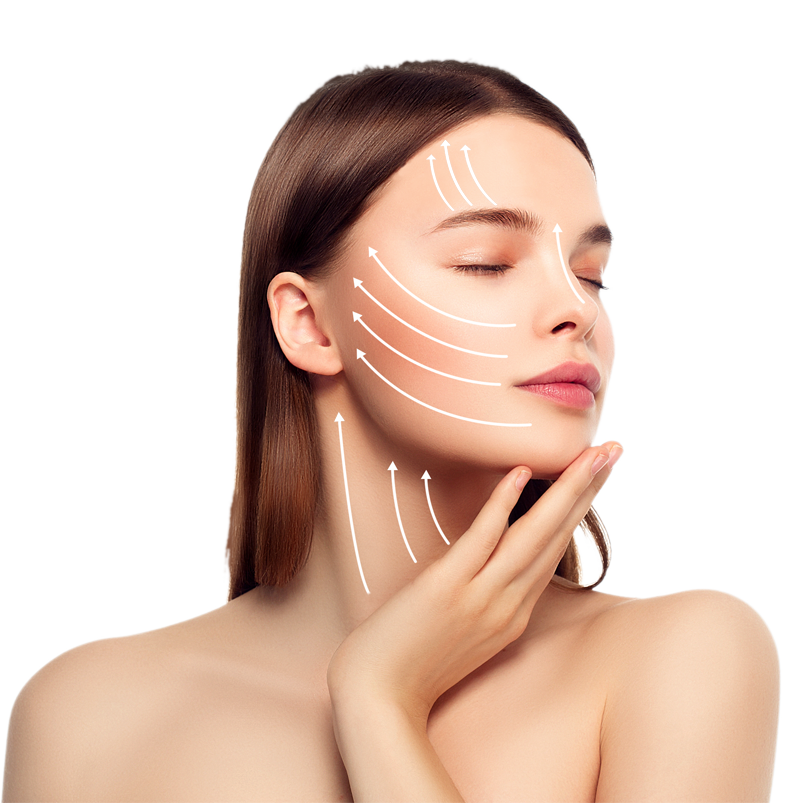What is a skin filling?
Skin filling materials
As you
age, there is some reduction in the amount of fat under the skin. Depending on
the genetic condition and the way of life, different numbers of facial lines
and wrinkles appear on the skin. This is where skin-filling substances come
into play and become a great option for treating collapsed areas with fat loss,
wrinkles and deep facial lines. However, it is very important to select the
appropriate candidates. fillers; Surgical solutions such as facelift, forehead
lift, blepharoplasty can not be replaced. Therefore, one should expect in a
very wrinkled, flabby facial skin, only with fillers no miracles, which can
only lead to frustration. People in the Middle Ages with a healthy physical
structure, non-smokers, constantly striving for skincare and their aging lines
are just beginning to emerge are good candidates for a filling. Depending on
the basic chemical structure, synthetic fillers dissolve in the body after a
certain amount of time. Skin filling materials are tested in several categories:
1.
Autologous materials: They are made from our own fabric. Fibroblasts
(fibrocells) made from fats, cartilages, fasciae, dermis and tissue cultures
can be injected. They have no allergic, immunological and carcinogenic effects.
2.
Biological materials: These are from foreign human and animal origin. Products
like collagen and hyaluronic acid are included. There may be disadvantages such
as hypersensitivity and disease transmission. The stay in the body is however
limited.
3.Synthetic materials: The stay in the body is longer. There is no
risk for protein reactions or disease transmission. However, on the other hand,
scarring and collapse due to gargling, infection, displacement, removal and
sinking are the major drawbacks. a) Calcium hydroxyapatite (half-lasting:
Radiesse) b) PTFE and PMMA (permanent products: Artefill)
4. Labelless products: These products are not approved for use in the US,
but are widely used in Europe and other countries for consumption. Hundreds of
brands are sold in the market. Let's take a look at the most widely used
products:
Radiesse: Calcium hydroxyapatite structural fillers
that can remain in the body for an average of 9 to 18 months. They are injected
into the deep dermis. They are used successfully for cheek, jaw and jaw edge
elevations, deep eyebrow and forehead wrinkles, for the treatment of acne scars,
for facial lipid melts, for deep nasolabial folds, for the treatment of trauma
reduction or steroid injections. It is not used for the lips. After injection
it reaches the maximum volume after 4-6 weeks. A tendency to agglomerate is
8-10%. A massage after the injection is very important to eliminate
irregularities.
These are hyaluronic
acid fillers: Juvederm, Restylane, Hylaform, Perlane, Prevelle, Captique,
Puragen, Esthelis. They show no immunological reaction, which is why no skin
test is required even before use. Since the application can be somewhat
painful, some products contain lidocaine for practical reasons. The body stay
is 6-9 months. After application the swelling can last for 3-5 days. In some
cases, coming and going swelling periods of up to 2-6 weeks may occur. If it
comes to bruises, they heal within 1 to 1.5 weeks. To minimize these side
effects, it is advantageous to perform an ice treatment at intervals after use
for the first 24 hours. The most common areas are; Acne scars, laugh lines,
cigarette folds on the lips, cheeks, wrinkles between the eyebrows, wrinkles on
the edges of the eyes, pacifier wrinkles that stretch across the corners of the
mouth, scars on the face, and so on.
Sculptra:
polylactic filler. It acts as a stimulant that allows the body to produce its
own collagen. Therefore it shows its effect increasing in few months. It is
injected into the deep level. To increase volume, it is applied to cheekbones,
cheeks, laugh lines and temples. To achieve the desired result, 2-3 sessions
may be required, which must be repeated every 3 months. It can form papules in
the subcutaneous tissue.
Zyderm I-II, Zyplast, Osmoderm I-II, Cosmoplast, Artecoll,
Artefill, Isologen, Dermalogen
These
collagen fillers are products of human and animal origin or biotechnologically
produced products. Depending on the composition, they are used throughout the
facial area, deep or superficial, to remove wrinkles or to procure the volume.
Isologen and autologues are based on the injection of culture-produced
fibroblasts from a piece of skin taken from the individual himself. Where fibroblasts
are used, collagen is also produced. The shelf life of collagen based
restoratives varies between 3 and 12 months, depending on the chemical
structure.










